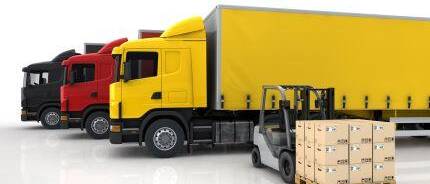Transport management in intralogistics
The standard module Transportation Management is the central instance for monitoring, commissioning and coordinating all transport orders and transport resources in the material flow control in intralogistics.
Static and dynamic data
The productive system is based on a static image of the materials handling equipment, which is independently created or maintained on a configuration system.
This image consists of the following data:
- Equipment points
- Routes as directed connections between two points
- Schedule entries that define the route from a point to the transport destination
Every possible transport alternative in the facility is listed. The schedule entries have a sort order that determines which alternative is preferred. In addition, it is specified here which “area manager” is responsible for assigning a specific transporter.
Resources in transport management
On the basis of this static data (facility matrix) compared with a dynamic mapping of the facility resources (= the current operating status data), the most effective free resource is assigned the onward transport of the transported goods.
The capacity of the resources is determined by the resource type, the type of area manager and by the capacity of the end point of the current route.
In the productive system, resources can be blocked or released at any time. This allows you to react to long-term system malfunctions. If a point or a conveyor line is blocked, all schedule entries that would require the blocked resource are also blocked without being able to use an alternative. The dialogues for administering the productive system are list-oriented.
The area manager function makes it possible to operate even inhomogeneous, complex facilities with a few, standardized modules. Possible modules include, for example, storage and retrieval machines (double cycle management, aisle changes), pallet conveyor systems, taxi operations for areas with driverless transport systems, electric monorail systems / electric pallet floor tracks, container conveyor systems, sorters or forklift traffic areas with and without aisle monitoring.
For more information on transport management, see Transport management – forklift guidance system.
Image source: © Robert Kneschke – Fotolia.com
